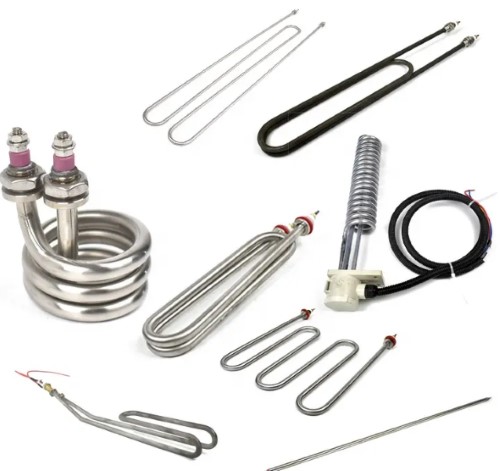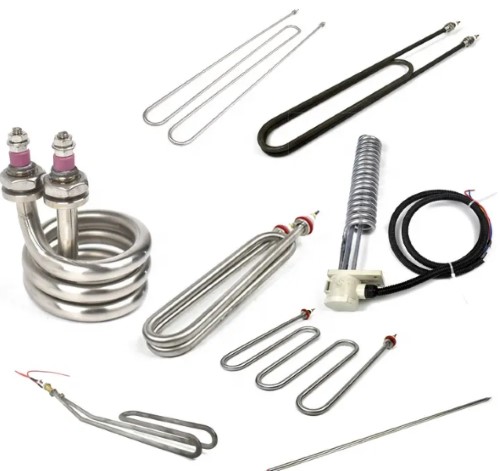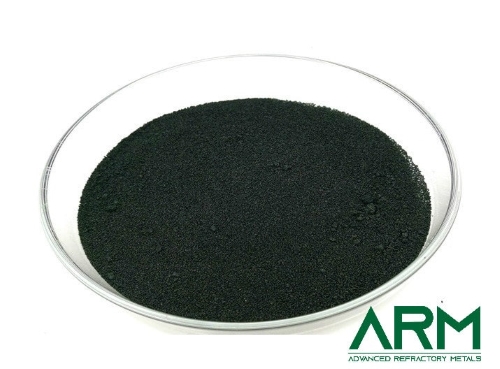Heating Elements: Molybdenum Disilicide vs. Silicon Carbide

Two of the most commonly used materials for high-temperature heating elements are Molybdenum Disilicide (MoSi₂) and Silicon Carbide (SiC). Both of these materials offer excellent high-temperature resistance and are widely used in various industrial processes. This article will compare Molybdenum Disilicide and Silicon Carbide, looking at their key characteristics, advantages, and ideal applications.

Molybdenum Disilicide (MoSi₂) – Overview and Properties
Molybdenum Disilicide (MoSi₂) is known for its remarkable ability to withstand high temperatures, with the capacity to operate effectively at temperatures up to 1,800°C. MoSi₂ is used as a heating element material in applications where high temperatures and excellent thermal conductivity are required.
One of the key benefits is its electrical conductivity,making it ideal for electric heating elements. As the temperature increases, the electrical resistance of MoSi₂ also increases, which means that it can generate heat efficiently when used in electrical heating systems. In addition to its electrical properties, MoSi₂ also offers excellent thermal stability and high mechanical strength at elevated temperatures.
At high temperatures, MoSi₂ forms a protective layer of silica (SiO₂) on its surface, which helps to prevent oxidation and extends the material's lifespan. This silica layer is crucial for MoSi₂'s performance in oxygen-rich environments, as it significantly enhances its oxidation resistance. This makes MoSi₂ an excellent choice for high-temperature furnaces, kilns, and other heating applications where oxidation resistance is required.

Silicon Carbide (SiC) – Overview and Properties
Silicon Carbide (SiC) is another highly durable and heat-resistant material that is used in high-temperature heating elements. SiC is renowned for its excellent mechanical strength, thermal conductivity, and resistance to thermal shock. SiC can withstand temperatures up to around 1,650°C, which is slightly lower than MoSi₂ but still more than adequate for many high-temperature applications.
One of the most significant advantages of SiC is its exceptional resistance to oxidation, even at extremely high temperatures. SiC naturally forms a layer of silicon dioxide (SiO₂) at high temperatures, preventing further oxidation and enhancing the material's durability. This property makes SiC ideal for use in applications where exposure to oxygen or aggressive atmospheres is common.
SiC also boasts low electrical conductivity compared to MoSi₂, which means it is typically used in applications where the heating element is exposed to direct electrical current. In such cases, the low conductivity of SiC is beneficial, as it helps to limit current flow and reduce heat generation. This property, combined with its excellent thermal properties, makes SiC a popular choice for heating elements in industrial processes that require precise temperature control and stability.
Molybdenum Disilicide vs. Silicon Carbide
While both Molybdenum Disilicide and Silicon Carbide are used for similar purposes, there are some notable differences between the two.
- Temperature Resistance: MoSi₂ can withstand higher temperatures than SiC, with a maximum operating temperature of 1,800°C, compared to SiC's 1,650°C. This makes MoSi₂ ideal for applications where extremely high temperatures are required.
- Oxidation Resistance: Both MoSi₂ and SiC are highly resistant to oxidation, but MoSi₂ relies on the formation of a silica layer on its surface to protect it, while SiC naturally forms a protective silicon dioxide layer. MoSi₂'s ability to form a silica layer provides excellent protection in oxygen-rich environments, whereas SiC's inherent oxidation resistance makes it more durable in aggressive atmospheres.
- Electrical Conductivity: MoSi₂ offers better electrical conductivity than SiC, making it suitable for direct electrical heating applications. SiC, on the other hand, has lower electrical conductivity, which makes it less efficient for direct electric heating but ideal for situations where heat needs to be generated through other means, such as induction or infrared heating.
- Thermal Shock Resistance: Silicon Carbide is more resistant to thermal shock than Molybdenum Disilicide. This is particularly beneficial in applications where the heating elements are subjected to rapid temperature changes. SiC can withstand sudden temperature fluctuations without cracking or failing, whereas MoSi₂ is more susceptible to thermal shock under similar conditions.
- Mechanical Strength: Both MoSi₂ and SiC offer high mechanical strength at elevated temperatures, but SiC generally has better overall mechanical properties. SiC's hardness and strength make it suitable for more demanding industrial applications, such as those that require the heating element to support heavy loads or endure mechanical stress.
Ideal Applications for MoSi₂ and SiC
Molybdenum Disilicide (MoSi₂): MoSi₂ is typically used in high-temperature furnace applications, such as in the production of ceramics, metals, and glass. It is also commonly found in kilns used for firing and sintering materials. Its high temperature resistance and oxidation protection make it suitable for applications in oxygen-rich environments, such as in metal heat treatment and semiconductor processing.
Silicon Carbide (SiC): SiC is often used in heating elements for industrial furnaces, electric arc furnaces, and high-temperature reactors. Its excellent thermal conductivity and oxidation resistance make it ideal for applications in the aerospace, automotive, and semiconductor industries. SiC is also widely used in applications where thermal shock resistance is important, such as in kilns for ceramics and pottery.
Conclusion
Both Molybdenum Disilicide and Silicon Carbide are excellent materials for high-temperature heating elements, but the choice between the two depends on the specific needs of the application. MoSi₂ is ideal for applications that require extremely high temperatures and efficient electrical conductivity, while SiC excels in environments where thermal shock resistance and oxidation resistance are paramount. For more heat resistant materials, please check Advanced Refractory Metals (ARM).
{{item.content}}
LEVE A REPLY
{{item.children[0].content}}
{{item.content}}






